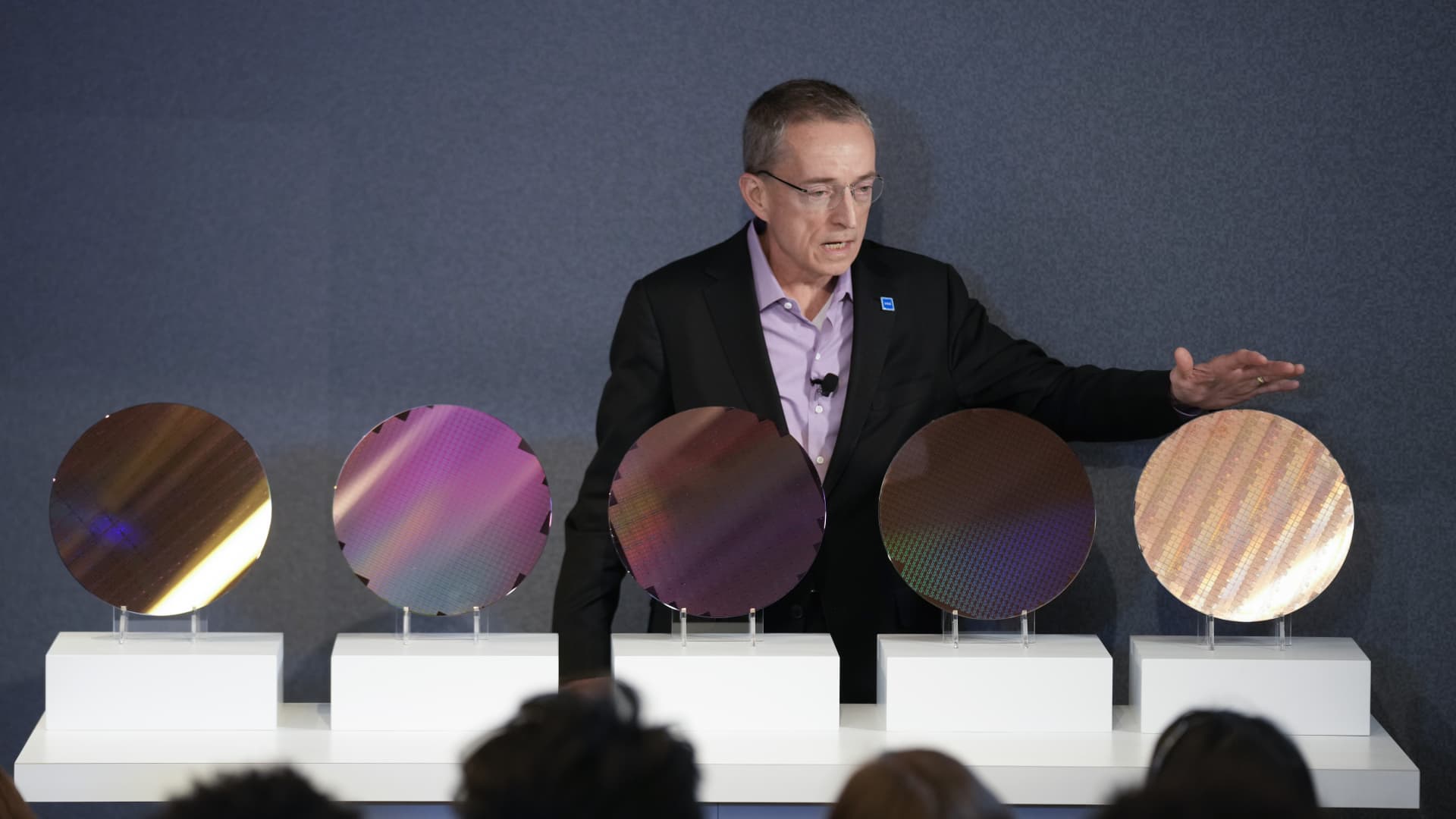Intel CEO Pat Gelsinger showcased silicon wafers during the AI Everywhere event in New York on Dec. 14, 2023, but the company’s long-anticipated turnaround seems further out of reach following disappointing first-quarter earnings. Shares plummeted 9% on Friday, hitting their lowest point of the year.
While Intel’s revenue has stabilized and it still leads in the production of processors for PCs and laptops, first-quarter sales fell short of expectations. The company also issued a lackluster forecast for the second quarter, indicating weak demand. This challenging performance comes as CEO Pat Gelsinger navigates his fourth year at the helm.
However, Intel’s struggles stem from years of setbacks. Before Gelsinger’s return in 2021, the company had lost its competitive edge in semiconductor manufacturing to international competitors like Taiwan Semiconductor Manufacturing Co. Now, Intel is investing billions each quarter in a high-risk effort to regain its position.
“Job number one was to accelerate our efforts to close the technology gap that was created by over a decade of underinvestment,” Gelsinger told investors on Thursday, expressing confidence in the company’s path to catch up by 2026.
Despite this optimism, investors remain wary. Intel is the worst-performing tech stock in the S&P 500 this year, down 37%. In contrast, chipmaker Nvidia and Super Micro Computer, bolstered by soaring demand for Nvidia-based AI servers, have seen significant growth.
Once the most valuable U.S. chipmaker, Intel now lags far behind Nvidia in market capitalization and trails competitors like Qualcomm, Broadcom, Texas Instruments, and AMD. After experiencing seven consecutive quarters of revenue decline, Intel was even surpassed by Nvidia in sales last year.
Gelsinger is pinning his hopes on a risky business model shift. In addition to manufacturing its own processors, Intel plans to serve as a factory for other chip companies that outsource their manufacturing, including Nvidia, Apple, and Qualcomm. Success in acquiring customers hinges on Intel reclaiming “process leadership.”
While some see Intel as a vital player in the U.S. processor supply chain, skeptics point to the company’s repeated promises of improvement without tangible results. The company’s missteps, including missing out on the mobile chip market and lagging in AI development, have led to substantial market share losses.
Intel’s struggles underscore the importance of continuous innovation in the semiconductor industry, where advancements in transistor technology drive progress. The company’s challenges in scaling down its process node and delivering on Moore’s Law have eroded its competitive edge.
Ultimately, Intel’s future hinges on its ability to adapt to a rapidly evolving industry landscape and regain its leadership position in semiconductor manufacturing. As Gelsinger works to steer the company toward recovery, the road ahead remains uncertain.

